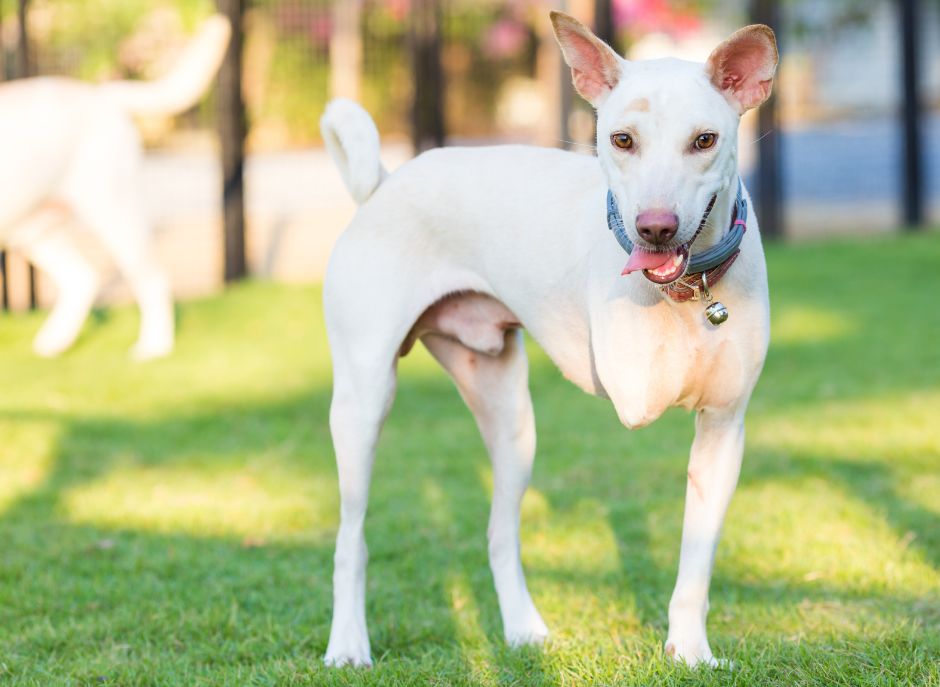If you’ve ever met a three-legged pet (affectionately called tripawds), you know they don’t dwell on what’s missing—they’re too busy living life to the fullest! These resilient companions are just as playful, loving, and adventurous as their four-legged friends. While the thought of losing a limb might tug at our heartstrings, our furry pals are experts at adapting. Once they’ve healed, they bounce back with remarkable spirit. That said, a few simple adjustments can help keep your tripawd pet comfortable, confident, and thriving in their new three-legged lifestyle.
At Home: Setting Up for Success
Making a few simple changes at home can greatly improve your three-legged friend’s comfort and mobility:
- Raise food and water bowls – This helps with balance and reduces strain on their remaining limbs while they eat and drink.
- Add traction to slippery floors – Hardwood and tile can be tricky for tripawds. Rugs, carpets, or non-slip mats provide stability and prevent slips.
- Use ramps for easier access – If stairs or furniture are a challenge, ramps can help your pet safely reach their favorite snuggle spots.
- Provide a supportive bed – Orthopedic beds cushion joints and ease pressure, keeping your pet comfortable.
- Opt for an easy-access litter box – A shallow pan makes bathroom breaks easier for three-legged cats without the struggle of climbing in and out.
Staying Active: Keeping Your Tripawd Strong & Healthy
Regular movement is essential for all pets, and three-legged companions are no exception! Keeping them fit helps prevent unnecessary strain on their remaining limbs.
- Daily walks & playtime – Tripawd dogs can still enjoy strolls, hikes, and even light jogging. Just keep an eye out for signs of fatigue or discomfort.
- Smart climbing for cats – Many three-legged cats still love to climb, but jumping down can be tricky. A cat tree with staggered platforms makes for a safer descent.
- Balance activity with rest – Exercise is important, but so is knowing when to pause. If your pet starts favoring a limb, it’s time for a break.
Health & Wellness: Keeping Them in Top Shape
Three-legged pets may require a little extra care to keep them feeling their best, as their remaining limbs work harder to compensate.
- Maintain a healthy weight – Extra pounds put unnecessary strain on joints, so keeping your pet lean helps prevent mobility issues.
- Paw & nail care – Regular nail trims and trimming fur between paw pads reduce the risk of slipping.
- Vet checkups are a must – Routine visits help catch early signs of arthritis or joint strain. Your vet can recommend supplements, physical therapy, or pain relief to keep your pet comfortable and active.
Mobility Support: Assisting Aging Tripawds
While most three-legged pets adapt beautifully, they may need extra assistance as they age to stay mobile and comfortable.
- Mobility harnesses – Specially designed for tripawds, these harnesses come with a sturdy handle to help with stairs. obstacles, or longer walks (tripawd parents call this “suitcasing” their pet!).
- Prosthetics – Some pets thrive with a custom prosthetic limb. Thanks to 3D printing, these devices are more accessible than ever. Check with your vet to see if it’s an option for you.
- Wheelchairs & carts – For extra front or rear support, a pet wheelchair can be life-changing—once they get the hang of it, they’ll be zooming around with confidence!
Embracing Life on Three Legs
Three-legged pets may be short a limb, but they never fall short on love, joy, or adventure. With a few small adjustments and some extra TLC, they can live just as long, active, and happy lives as any other pet. Whether they’re zooming to the treat jar, snuggling up for a cozy cuddle, or bounding into playtime with enthusiasm, one thing is certain—tripawds are unstoppable, and their resilience is nothing short of inspiring!
